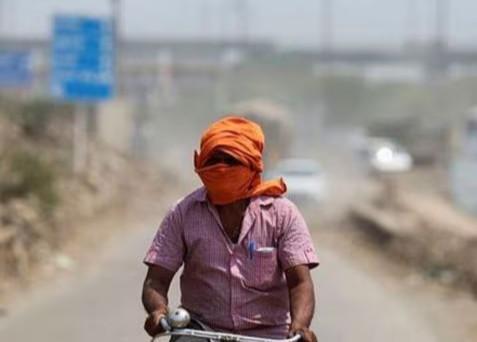
Extreme Heat Endangering Health & Productivity of Workers: Report
As the world grapples with the consequences of climate change, a recent report by the World Health Organisation (WHO) and the World Meteorological Organisation (WMO) has sounded a dire warning about the impact of extreme heat on the health and productivity of workers. According to the report, worker productivity drops by 2-3% for every degree above 20°C, putting millions of workers around the world at risk.
The report highlights the vulnerability of manual workers in agriculture, construction, and other sectors that require physical labor. These workers are already at a disadvantage when it comes to heat-related illnesses, as they often lack access to adequate shade, water, and protective gear. The situation is even more dire for vulnerable populations such as children and the elderly in developing countries, who are more susceptible to heat-related illnesses.
Heat-related illnesses are a serious concern, particularly in areas where temperatures are consistently above 30°C. Heatstroke, dehydration, and kidney dysfunction are just a few of the health risks associated with extreme heat. In severe cases, heat-related illnesses can lead to long-term health problems, disability, and even death.
The report emphasizes that the impact of extreme heat on worker productivity is not limited to individual workers. It can also have a ripple effect on entire industries and economies. In agriculture, for example, heat-related illnesses can lead to labor shortages, reduced crop yields, and increased food prices. In construction, heat-related illnesses can result in project delays, increased costs, and compromised building quality.
The report highlights several key findings that underscore the severity of the problem:
- In 2018, an estimated 14,000 people died from heat-related illnesses in the United States alone.
- Heat-related illnesses are responsible for an estimated 12% of all work-related deaths in the United States.
- The number of heat-related illnesses is expected to increase by 50% by 2050 due to climate change.
- The economic cost of heat-related illnesses is estimated to be around $100 billion per year in the United States.
So, what can be done to mitigate the impact of extreme heat on workers?
First and foremost, employers must prioritize worker safety and health. This includes providing access to shade, water, and protective gear, as well as training workers on heat-related illnesses and how to prevent them.
Governments must also take action to address the issue. This includes developing and implementing heat-related illness prevention strategies, as well as investing in research and development of heat-mitigation technologies.
Individuals can also take steps to reduce their risk of heat-related illnesses. This includes staying hydrated, taking regular breaks in shaded areas, and avoiding strenuous physical activity during the hottest part of the day.
In conclusion, the report by the WHO and WMO is a wake-up call for governments, employers, and individuals around the world. Extreme heat is a serious threat to worker health and productivity, and it is essential that we take immediate action to address the issue.
Source: https://repository.inshorts.com/articles/en/PTI/45d9bd2d-ff57-417c-9e5f-831344bb34b0






